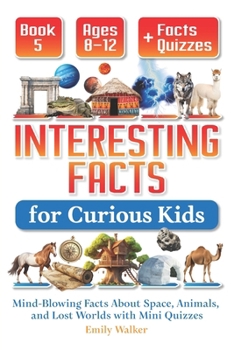Interesting Facts for Curious Kids Ages 8-12 (Book 5): Mind-Blowing Facts About Space, Animals, and Lost Worlds with Mini Quizzes
Why is Neptune blue while Mercury looks gray? Can people really live in houses made of ice or salt? And why did great cities like Troy or Mohenjo-Daro disappear?
This fifth and final book in the Interesting Facts for Curious Kids series explores the science of planets, the design of extreme homes, the mysteries of lost civilizations, and the secrets of the skies above us. From methane-blue atmospheres to rotating houses, from ancient maps to animal allies, each chapter uncovers how humans and nature have shaped the world together.
With over 200 pages of fascinating explanations, every fact is based on real science and history-written for kids to understand and enjoy. And after every chapter, a quiz makes learning active, helping important ideas stick.
Inside you'll discover:
Planetary colors - why worlds across the solar system look so different.
Extreme homes - ingenious shelters from ice huts to salt houses.
Mapping the Earth - from mythical drawings to measured miles.
Skies that glow and flicker - auroras, sunsets, and lightning displays.
Animal allies - how humans turned wild creatures into helpers and companions.
Lost civilizations - vanished kingdoms and forgotten cities around the globe.
Perfect for ages 8-12, this book brings together astronomy, archaeology, biology, and engineering in a way that makes discovery fun and memorable.
About This Series: Interesting Facts for Curious Kids Ages 8-12
This series includes 5 books, each one exploring a different theme-from animals and inventions to ancient history, strange science, and the secrets of our planet. Every fact comes with a clear explanation, and every chapter ends with a quiz to turn curiosity into discovery.





